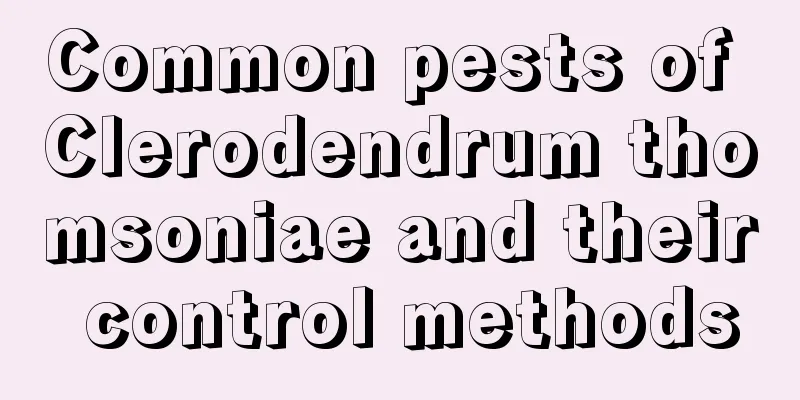Common pests of Clerodendrum thomsoniae and their control methods

Leaf BeetlePest symptomsLeaf beetles are generally more common in tropical regions. But this kind of pest also occurs in our country in summer. Everyone should also be careful and preventive. They often gnaw on the leaves, leaving them unrecognizable and destroying the ornamental effect of the plant. Prevention and treatment methodsArtificial capture and the addition of pesticides are two-pronged prevention and control measures. Once leaf beetles are found, they should be captured and killed immediately. Then spray the plants with pesticides to prevent the larvae from continuing to grow and harm the plants. The pesticide can be sprayed with 3000 times diluted 2.5% dimethoate. Ligustrum mothPest symptomsThe spiny moth, also known as the starworm, particularly likes to suck young leaves. The tender branches of the plants are where they live, and they often gnaw at the plants to the point of poor growth. Prevention and treatment methodsDuring the peak period of larvae, spray 1200 times diluted 80% DDT EC, 1000 times diluted 50% phoxim EC, 1000 times diluted 50% malathion EC, 1000 times diluted 25% phosmet EC, 1500 times diluted 25% Acumin EC, 3000 times diluted 5% Levofloxacin EC. Scale insectsPest symptomsAdults and nymphs suck sap from petioles, leaf bases, and leaf surfaces, producing yellow spots. Scale insects can easily reproduce and cause harm in a poorly ventilated environment. Prevention and treatment methodsEnsure ventilation. Once scale insects occur, spray 1000 times diluted 25% cypermethrin wettable powder or 800-1000 times diluted 40% cypermethrin emulsifiable concentrate in time, once every 7 days for 2-3 times in a row. WhiteflyPest symptomsWhiteflies suck plant sap, which can cause leaves to fade, curl, and shrink. They also often become vectors of various toxins and cause other diseases. Prevention and treatment methodsIt can be sprayed with 1000 to 1500 times diluted 40% oxydemeton-methyl. |
<<: Diseases and Pests of Hellebore and Their Control
>>: Common Pests of Angelica dahurica and Their Control Methods
Recommend
What fertilizer should be used to fertilize lucky bamboo so that it can grow luxuriantly? Does it need nutrient solution?
If you want lucky bamboo to grow well, you must f...
Chayote Growth Environment Conditions and Characteristics
Chayote Growth Environmental Conditions and Requi...
How to grow traveler's banana and precautions
If some flower lovers have a spacious living room...
Can lilies be exposed to the sun in summer?
Lily is a perennial bulbous plant that can produc...
How to acclimate succulents bought online in winter
Conditions for acclimatization of succulent plant...
When is the best season to plant carnations?
Carnation , also known as fragrant pink, is a per...
How to water succulents in spring?
Spring is the growth season for succulents and al...
When is the right time to repot the fairy finger (Precautions and techniques for repotting the fairy finger)
When is the best time to repot the fairy finger? ...
Is lily easy to grow? How to grow it?
1. Is it easy to raise? Lily is a flower with rel...
What is the reason for the water content of succulents and how to remedy it
1. Drain water in time The main reason for succul...
What is the legend of honeysuckle?
1. Flower language of honeysuckle Its flower lang...
What is the most suitable concentration for spraying urea foliar fertilizer?
Urea is a common nitrogen fertilizer. It is a qui...
What should you pay attention to when growing irises at home? Is it harmful to your health?
1. Maintenance 1. Light supplement: When growing ...
How and when to plant chrysanthemum
Before sowing Chinese cabbage, soak the seeds in ...
When is the season when apples ripen?
1. Maturity Time Apples mostly ripen in autumn. T...









